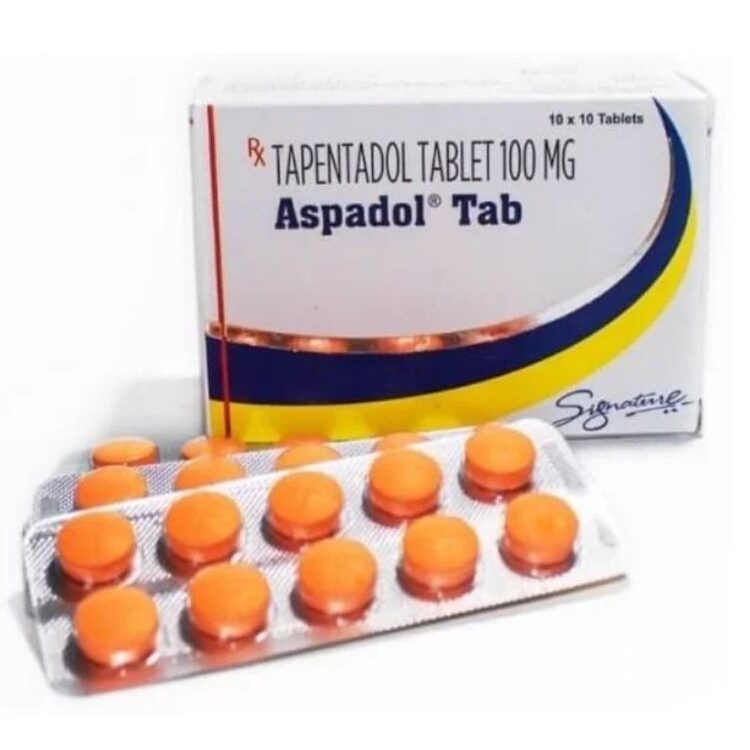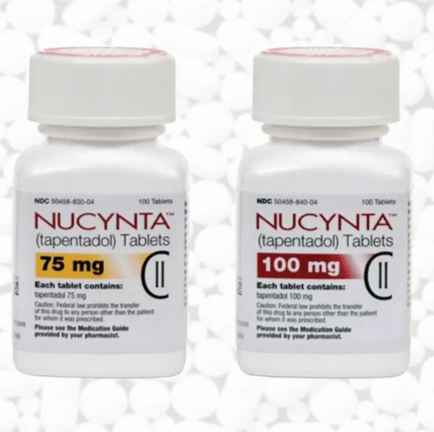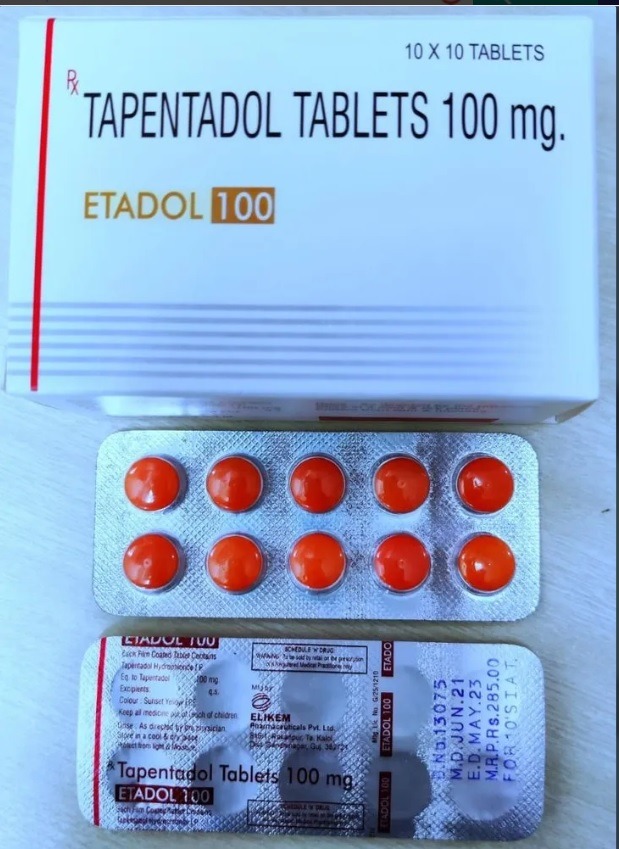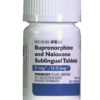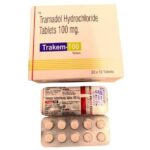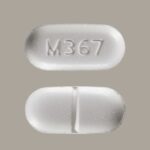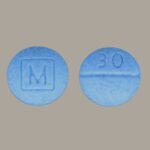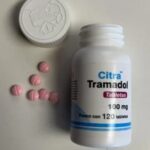What is tapentadol?
Tapentadol is an opioid pain medication. An opioid is sometimes called a narcotic.
Tapentadol is a prescription medicine that is used to treat moderate to severe pain.
Tapentadol extended-release form (Nucynta ER) is for around-the-clock treatment of pain that is not controlled by other medicines. The extended-release form of tapentadol is not for use on an as-needed basis for pain.
apentadol is used to help relieve moderate to severe short-term pain (such as pain from an injury or after surgery). It belongs to a class of drugs known as opioid analgesics. It works in the brain to change how your body feels and responds to pain.
How to use tapentadol oral
Read the Medication Guide provided by your pharmacist before you start taking tapentadol and each time you get a refill. If you have any questions, ask your doctor or pharmacist.
Take this medication by mouth as directed by your doctor. You may take this drug with or without food. If you have nausea, it may help to take this drug with food. Ask your doctor or pharmacist about other ways to decrease nausea (such as lying down for 1 to 2 hours with as little head movement as possible).
The dosage is based on your medical condition and response to treatment. Do not increase your dose or use this drug more often or for longer than prescribed. Properly stop the medication when so directed.
Pain medications work best if they are used as the first signs of pain occur. If you wait until the pain has worsened, the medication may not work as well.
Before taking this medicine
You should not use tapentadol if you are allergic to it, or if you have:
- severe asthma or breathing problems;
- a stomach or bowel obstruction (including paralytic ileus); or
- if you have taken an MAO inhibitor in the past 14 days, such as isocarboxazid, linezolid, methylene blue injection, phenelzine, or tranylcypromine.
To make sure tapentadol is safe for you, tell your doctor if you have ever had:
- breathing problems, sleep apnea (breathing that stops during sleep);
- a head injury, brain tumor, or seizures;
- alcoholism or drug addiction, mental illness;
- urination problems,
- liver or kidney disease; or
- problems with your gallbladder, pancreas, thyroid, or adrenal gland.If you use tapentadol while you are pregnant, your baby could become dependent on the drug. This can cause life-threatening withdrawal symptoms in the baby after it is born. Babies born dependent on habit-forming medicine may need medical treatment for several weeks.Ask a doctor before using opioid medicine if you are breastfeeding. Tell your doctor if you notice severe drowsiness or slow breathing in the nursing baby.Do not give tapentadol to a child.
How should I take tapentadol?
Take tapentadol exactly as prescribed by your doctor. Follow the directions on your prescription label and read all medication guides. Never use tapentadol in larger amounts, or for longer than prescribed. Tell your doctor if you feel an increased urge to take more of tapentadol.
Never share opioid medicine with another person, especially someone with a history of drug addiction. MISUSE CAN CAUSE ADDICTION, OVERDOSE, OR DEATH. Keep the medicine where others cannot get to it. Selling or giving away this medicine is against the law.
Stop taking all other medications that contain tapentadol or tramadol when you start taking tapentadol extended-release tablets.
Take tapentadol with a full glass of water at the same times each day, with or without food.
Do not crush, break, or open an extended-release pill. Swallow it whole to avoid exposure to a potentially fatal dose.
Tapentadol can cause constipation. Talk to your doctor before using a laxative or stool softener to treat or prevent this side effect.
Never crush a pill to inhale the powder or inject it into your vein. This could result in death.
You may have withdrawal symptoms if you stop using tapentadol suddenly. Ask your doctor before stopping the medicine.
Store at room temperature away from moisture and heat. Keep track of your medicine. You should be aware if anyone is using it improperly or without a prescription.
Do not keep leftover opioid medication. Just one dose can cause death in someone using this medicine accidentally or improperly. Ask your pharmacist where to locate a drug take-back disposal program. If there is no take-back program, flush the unused medicine down the toilet.
Dosing information
Usual Adult Dose for Pain:
Individualize therapy taking into consideration severity of pain, response to therapy, prior analgesic treatment experience, and risk factors for addiction, abuse, and misuse:
Immediate-Release:
Initial dose: 50 to 100 mg orally every 4 to 6 hours as needed for pain
-Day 1: A second dose may be administered as soon as 1 hour after the first dose if needed
-Subsequent dosing: 50, 75, or 100 mg orally every 4 to 6 hours; adjust dosing to maintain adequate analgesia with acceptable tolerability
Maximum dose: 700 mg on day 1; 600 mg/day on subsequent daysWhat happens if I miss a dose?
Since tapentadol is used for pain, you are not likely to miss a dose. Skip any missed dose if it is almost time for your next scheduled dose. Do not take extra medicine to make up the missed dose.
Do not take extra medicine to make up a missed dose. Do not take more than your prescribed dose in a 24-hour period.
What happens if I overdose?
Seek emergency medical attention or call the Poison Help line at 1-800-222-1222. An overdose can be fatal, especially in a child or person using opioid medicine without a prescription. Overdose symptoms may include severe drowsiness, pinpoint pupils, slow breathing, or no breathing.
Your doctor may recommend you get naloxone (a medicine to reverse an opioid overdose) and keep it with you at all times. A person caring for you can give the naloxone if you stop breathing or don’t wake up. Your caregiver must still get emergency medical help and may need to perform CPR (cardiopulmonary resuscitation) on you while waiting for help to arrive.
Anyone can buy naloxone from a pharmacy or local health department. Make sure any person caring for you knows where you keep naloxone and how to use it.
What should I avoid while taking tapentadol?
Do not drink alcohol. Dangerous side effects or death could occur.
Avoid driving or hazardous activity until you know how tapentadol will affect you. Dizziness or drowsiness can cause falls, accidents, or severe injuries.
Tapentadol side effects
Get emergency medical help if you have signs of an allergic reaction to tapentadol: hives; chest pain, fast heartbeats, difficult breathing; swelling of your face, lips, tongue, or throat.
Opioid medicine can slow or stop your breathing, and death may occur. A person caring for you should give naloxone and/or seek emergency medical attention if you have slow breathing with long pauses, blue colored lips, or if you are hard to wake up.
Call your doctor at once if you have:
- noisy breathing, sighing, shallow breathing, breathing that stops;
- a light-headed feeling, like you might pass out;
- agitation, feeling hot;
- severe drowsiness or dizziness, confusion, problems with speech or balance;
- a seizure;
- serotonin syndrome – agitation, hallucinations, fever, fast heart rate, muscle stiffness, twitching, loss of coordination, nausea, diarrhea; or
- low cortisol levels – nausea, vomiting, loss of appetite, dizziness, worsening tiredness or weakness.
Serious breathing problems may be more likely in older adults and in those who are debilitated or have wasting syndrome or chronic breathing disorders.
Common tapentadol side effects may include:
- constipation, nausea, vomiting, stomach pain;
- headache, feeling tired; or
- drowsiness, dizziness.
This is not a complete list of side effects and others may occur. Call your doctor for medical advice about side effects. You may report side effects to FDA at 1-800-FDA-1088.
What other drugs will affect tapentadol?
Many other drugs can be dangerous when used with opioid medicine. Tell your doctor if you also use:
- medicine for allergies, asthma, blood pressure, motion sickness, irritable bowel, or overactive bladder;
- other opioid medicines;
- a benzodiazepine sedative like Valium, Klonopin, or Xanax;
- sleep medicine, muscle relaxers, or other drugs that make you drowsy; or
- drugs that affect serotonin, such as antidepressants, stimulants, or medicine for migraines or Parkinson’s disease.
This list is not complete. Many drugs may interact with tapentadol, including prescription and over-the-counter medicines, vitamins, and herbal products. Not all possible interactions are listed here.
